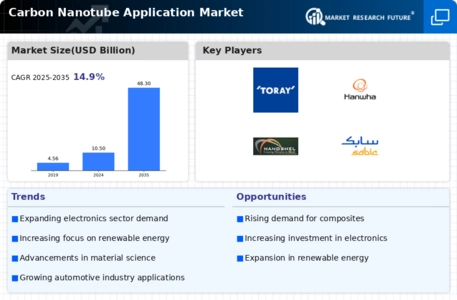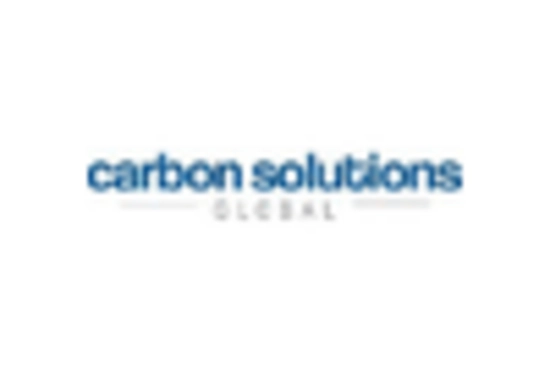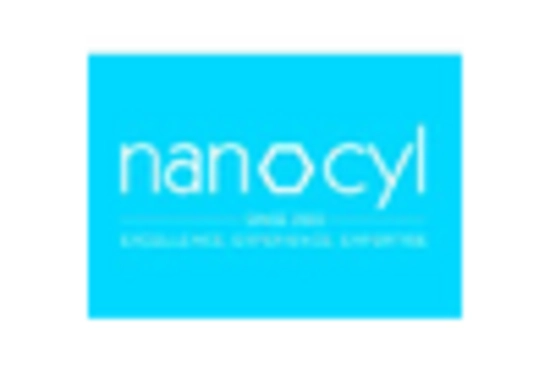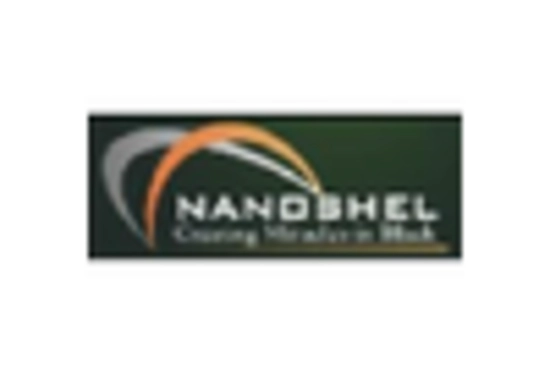Growth in Healthcare Applications
The Carbon Nanotube Application Market is witnessing growth in healthcare applications, particularly in drug delivery and medical imaging. Carbon nanotubes can be functionalized to carry therapeutic agents directly to targeted cells, enhancing the efficacy of treatments while minimizing side effects. Additionally, their unique optical properties make them suitable for use in imaging technologies, potentially improving diagnostic capabilities. The healthcare sector's increasing focus on personalized medicine and targeted therapies is likely to drive demand for carbon nanotube-based solutions. Market analysts predict that the healthcare applications of carbon nanotubes could represent a substantial share of the overall market, reflecting the material's versatility and potential.
Innovations in Energy Storage Solutions
The Carbon Nanotube Application Market is significantly influenced by innovations in energy storage solutions. As the world shifts towards renewable energy sources, the need for efficient energy storage systems becomes paramount. Carbon nanotubes are being explored for their potential to enhance the performance of batteries and supercapacitors. Their unique properties can lead to improved charge capacity and faster charging times. Recent studies indicate that carbon nanotube-enhanced batteries could achieve energy densities that surpass traditional lithium-ion batteries. This advancement could revolutionize the energy storage market, making carbon nanotubes a critical component in the development of sustainable energy solutions.
Environmental Sustainability Initiatives
The Carbon Nanotube Application Market is also being propelled by environmental sustainability initiatives. As industries face mounting pressure to reduce their carbon footprints, carbon nanotubes offer a pathway to more sustainable practices. Their ability to enhance the performance of materials while reducing waste aligns with the goals of many organizations striving for greener operations. For instance, the incorporation of carbon nanotubes in construction materials can lead to longer-lasting products that require less frequent replacement. This trend is expected to gain momentum as companies increasingly adopt sustainable practices, potentially leading to a significant increase in the market share of carbon nanotubes in various applications.
Increasing Demand for Lightweight Materials
The Carbon Nanotube Application Market is experiencing a surge in demand for lightweight materials, particularly in the aerospace and automotive sectors. As manufacturers strive to enhance fuel efficiency and reduce emissions, the incorporation of carbon nanotubes into composite materials offers a promising solution. These materials exhibit remarkable strength-to-weight ratios, which can lead to significant weight reductions in vehicles and aircraft. According to recent estimates, the use of carbon nanotubes in automotive applications could potentially reduce vehicle weight by up to 30%, thereby improving fuel economy. This trend is likely to continue as industries seek innovative ways to meet stringent environmental regulations and consumer expectations for sustainability.
Advancements in Electronics and Semiconductors
The Carbon Nanotube Application Market is poised for growth due to advancements in electronics and semiconductor technologies. Carbon nanotubes possess exceptional electrical conductivity and thermal properties, making them ideal candidates for next-generation electronic devices. The integration of carbon nanotubes in transistors and other semiconductor components could lead to faster, more efficient devices. Market projections suggest that the adoption of carbon nanotube-based materials in electronics could reach a valuation of several billion dollars by the end of the decade. This potential growth is driven by the increasing demand for high-performance electronics, including smartphones, tablets, and wearable devices, which require materials that can support miniaturization and enhanced functionality.


















Leave a Comment